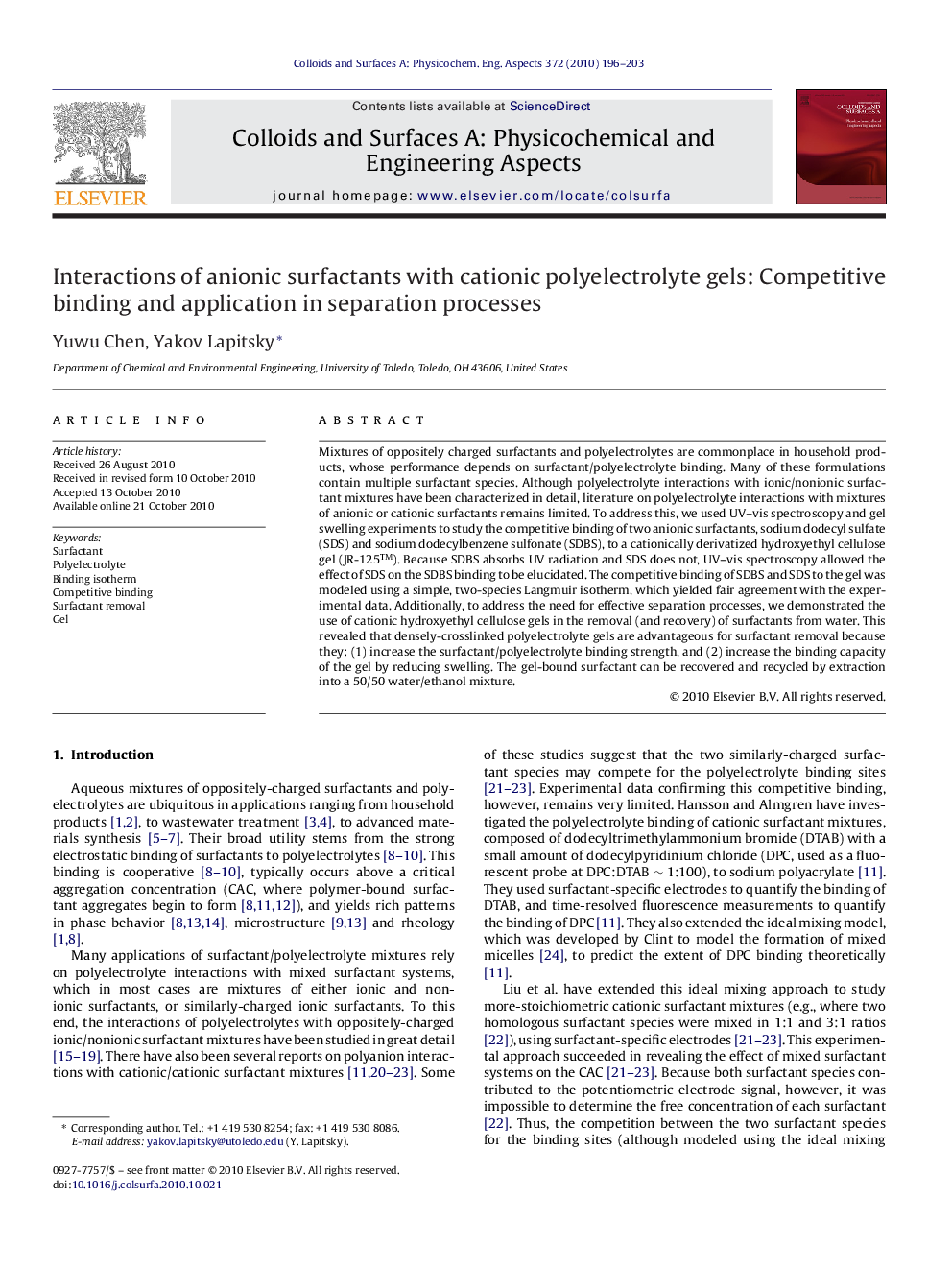| کد مقاله | کد نشریه | سال انتشار | مقاله انگلیسی | نسخه تمام متن |
|---|---|---|---|---|
| 595074 | 1454000 | 2010 | 8 صفحه PDF | دانلود رایگان |

Mixtures of oppositely charged surfactants and polyelectrolytes are commonplace in household products, whose performance depends on surfactant/polyelectrolyte binding. Many of these formulations contain multiple surfactant species. Although polyelectrolyte interactions with ionic/nonionic surfactant mixtures have been characterized in detail, literature on polyelectrolyte interactions with mixtures of anionic or cationic surfactants remains limited. To address this, we used UV–vis spectroscopy and gel swelling experiments to study the competitive binding of two anionic surfactants, sodium dodecyl sulfate (SDS) and sodium dodecylbenzene sulfonate (SDBS), to a cationically derivatized hydroxyethyl cellulose gel (JR-125TM). Because SDBS absorbs UV radiation and SDS does not, UV–vis spectroscopy allowed the effect of SDS on the SDBS binding to be elucidated. The competitive binding of SDBS and SDS to the gel was modeled using a simple, two-species Langmuir isotherm, which yielded fair agreement with the experimental data. Additionally, to address the need for effective separation processes, we demonstrated the use of cationic hydroxyethyl cellulose gels in the removal (and recovery) of surfactants from water. This revealed that densely-crosslinked polyelectrolyte gels are advantageous for surfactant removal because they: (1) increase the surfactant/polyelectrolyte binding strength, and (2) increase the binding capacity of the gel by reducing swelling. The gel-bound surfactant can be recovered and recycled by extraction into a 50/50 water/ethanol mixture.
.Figure optionsDownload as PowerPoint slideResearch highlights▶ Mixtures of anionic surfactants bind competitively to cationic polyelectrolyte gels. ▶ The competitive binding can be approximated using a two-species Langmuir isotherm. ▶ Cationic polyelectrolyte gels can be used to remove anionic surfactants from water. ▶ Gel-bound surfactants can be recycled via extraction into water/ethanol mixtures.
Journal: Colloids and Surfaces A: Physicochemical and Engineering Aspects - Volume 372, Issues 1–3, 3 December 2010, Pages 196–203